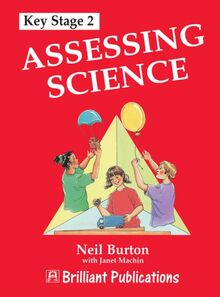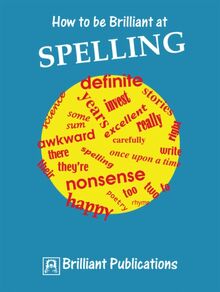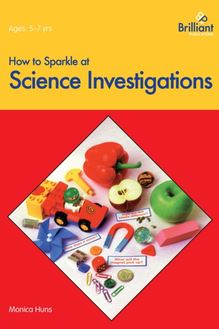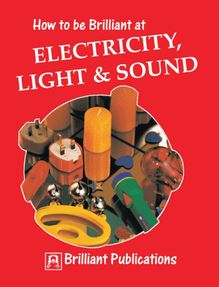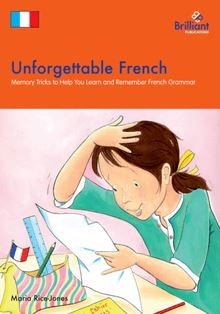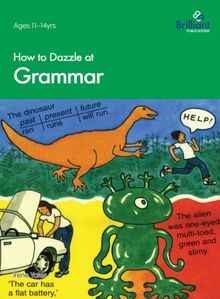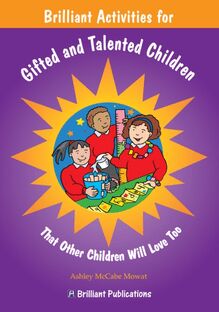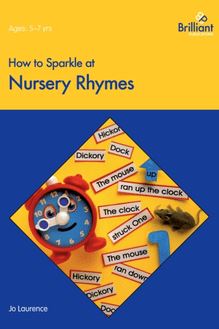How to be Brilliant at Mental Arithmetic , livre ebook
83
pages
English
Ebooks
2012
Vous pourrez modifier la taille du texte de cet ouvrage
Obtenez un accès à la bibliothèque pour le consulter en ligne En savoir plus
Découvre YouScribe en t'inscrivant gratuitement
Découvre YouScribe en t'inscrivant gratuitement
83
pages
English
Ebooks
2012
Vous pourrez modifier la taille du texte de cet ouvrage
Obtenez un accès à la bibliothèque pour le consulter en ligne En savoir plus
Publié par
Date de parution
15 octobre 2012
Nombre de lectures
0
EAN13
9780857475480
Langue
English
Publié par
Date de parution
15 octobre 2012
Nombre de lectures
0
EAN13
9780857475480
Langue
English
Title Page
HOW TO BE BRILLIANT AT MENTAL ARITHMETIC
Beryl Webber
Jean Haigh
Publisher Information
Originally published in 1997 by
Brilliant Publications, Unit 10, Sparrow Hall Farm, Edlesborough, Bedfordshire LU6 2ES
email: info@brilliantpublications.co.uk
website: www.brilliantpublications.co.uk
general enquiries:
tel: 01525 222292
Digital edition converted and published in 2011 by
Andrews UK Limited
www.andrewsuk.com
Written by Beryl Webber and Jean Haigh
Illustrated by Kate Ford
© Beryl Webber and Jean Haigh 1997
The right of Beryl Webber and Jean Haigh to be identified as authors of this work has been asserted by them in accordance with the Copyright, Designs and Patents Act 1988.
Certain indicated sheets may be printed/photocopied by individual teachers for class use, without permission from the publisher and without declaration to the Publishers Licensing Society. The materials may not be reproduced in any other form or for any other purpose without the prior permission of the publisher.
Introduction
How to be Brilliant at Mental Arithmetic contains 41 printable/photocopiable sheets designed to support the development of accurate mental recall of number facts and the skill to calculate mentally. They can be used whenever the need arises for particular activities to support and supplement whatever core mathematics programme you use. The activities provide learning experiences which can be tailored to meet individual children’s needs.
The activities are addressed directly to the children. They are self-contained and many children will be able to work with very little support from you. You may have some children, however, who have the necessary mathematical concepts and skills but require your help in reading the sheets.
The children will need pencils and should be encouraged to do as much working as possible in their heads. Some activities require extra resources such as coloured pencils, counters, scissors and a calculator. Some will require the use of additional resource sheets and these can be found at the back of the book. Where this is the case, an interactive link to the relevant sheet is provided.
How to be Brilliant at Mental Arithmetic relates directly to the programmes of study for Using and Applying Mathematics and Number. This section gives further details, and this section gives the activities coded according to programme of study and difficulty. The difficulty is indicated by a letter code (A-C) and is provided to give you an indication of how the activities relate to mathematical progression within the key stage. Activities coded A are the most challenging. Each activity also relates to the Using and Applying section of the programme of study in a variety of ways.
This section provides a self-assessment sheet so that children can keep a record of their own progress.
Why Teach Mental Arithmetic?
Mental arithmetic is an important aspect of mathematics. It has a central position in the National Curriculum programmes of study and children are now expected to be very adept at handling numbers mentally. The Key Stage 2 National Curriculum mathematics tests now include a separate test of mental arithmetic.
The skill of being able to calculate mentally quickly and accurately depends on a firm understanding of the four operations and sufficient grasp of the number system to allow the adoption of a variety of flexible techniques. Children need encouragement and active teaching to become good at discovering quick and efficient ways of calculating mentally. Everyone needs to develop a range of strategies with which they feel comfortable. When asked, a group of adults is likely to report that they undertake the same mental calculation in a wide range of ways. Each adopts those strategies that feel the most comfortable and familiar. In order to develop the range of strategies and for them to become comfortable and familiar, it is important that there are plenty of opportunities to practise the skills and extend the range available.
It might be thought that in the modern technological age where calculators are freely available the need for mental arithmetic would diminish. In fact, the reverse is true and the demand from employers for school leavers who are numerically agile, confident and accurate with mental calculations is growing. What seems to be happening is that the importance of written calculations is diminishing.
This book addresses the twin pillars of mental arithmetic, ie mental recall and mental agility. Mental recall depends on familiarity with number bonds and plenty of opportunity to practise. Mental agility depends more on confidence with the number system and good mental models of it. Mental calculation is not most easily done by trying to visualise it on what Hilary Shuard called ‘the blackboard of the mind’. Children should be actively discouraged from doing this as it seriously inhibits quick and accurate mental arithmetic.
It is to help children develop good mental models of the number system that some activities in this book require the use of tools that may not usually be associated with mental arithmetic - such as 100 squares, base 10 apparatus and number lines. These tools provide alternative models for the number system that will help children develop a wider range of mental models. Calculators are also used in some activities for checking the accuracy of the mental calculations. They should not be used as a substitute for mental agility.
In this book there are basically three types of activity: those which help children develop a range of mental models; those which provide children with a range of strategies for mental calculation; and those which provide opportunity for practice of mental arithmetic. They all support the development of accurate mental recall of number facts and flexible and confident mental agility.
Links to the National Curriculum
The activities in this book allow children to have opportunities to:
•use and apply mathematics in practical tasks, in real-life problems and within mathematics itself;
•take increasing responsibility for organizing and extending tasks;
•develop flexible and effective methods of computation, and use them with understanding.
In particular these activities relate to the following sections of the Key Stage 2 programme of study.
Using and Applying Mathematics
2Making and monitoring decisions to solve problems
aselect and use the appropriate mathematics;
btry different mathematical approaches;
cdevelop their own mathematical strategies and look for ways to overcome difficulties;
dcheck their results and consider whether they are reasonable.
3Developing mathematical language and forms of communication
aunderstand the language of
•number
•relationships, including ‘multiple of’, ‘factor of’.
4Developing mathematical reasoning
bsearch for patterns in their results;
cexplain their reasoning.
Number
2Developing an understanding of place value and extending the number system
aread, write and order whole numbers, understanding that the position of a digit signifies its value; use their understanding of place value to develop methods of computation, to approximate numbers to the nearest 10 or 100, and to multiply and divide by powers of 10 when there are whole number answers.
3Understanding relationships between numbers and developing methods of computation
aexplore number sequences, explaining patterns and using simple relationships;
cconsolidate knowledge of addition and subtraction facts to 20; know the multiplication facts to 10 x 10; develop a range of mental methods for finding quickly from known facts those that they cannot recall; use some properties of numbers, including multiples, factors and squares;
ddevelop a variety of mental methods of computation to develop a range of non-calculator methods of computation that involve addition and subtraction of whole numbers, progressing to methods for multiplication and division of up to three-digit by two-digit whole numbers;
funderstand and use the relationships between the four operations, including inverses.
4Solving numerical problems
adevelop their use of the four operations to solve problems, including those involving money and measures;
bchoose sequences of methods of computation appropriate to a problem, adapt them and apply them accurately.
Shape, Space and Measures
4Understanding and using measures
aknow the rough metric equivalents of imperial units still in daily use.
Programme of Study References
Each activity has been coded to indicate its main relationship with the above aspects of the programme of study for Key Stage 2.
The number and lower case letter represent the relevant sub-section and aspect of the programme of study.
For example:
N3(d) indicates Number, sub-section 3 (Understanding relationships between numbers and developing methods of computation), d - ‘develop a variety of mental methods ...’
Each activity is also coded by an upper case letter (A-C) indicating the relative difficulty of the activity itself. Activities coded ‘A’ are the most challenging.
PoS reference
Tens and units snap
N3(c) B
Digit cards 0–9
N3(c) C
